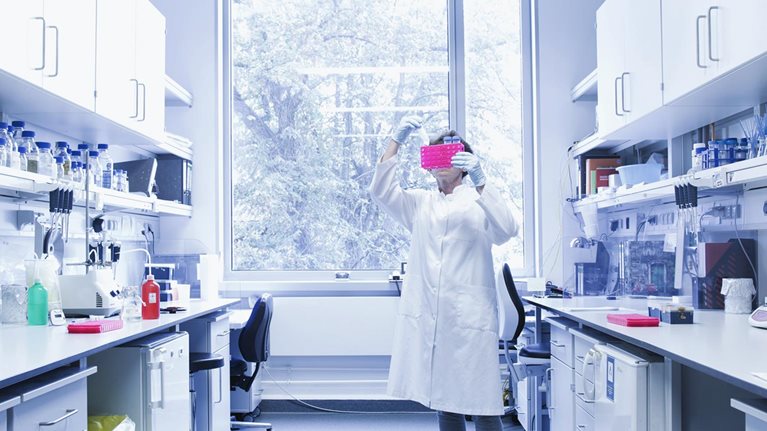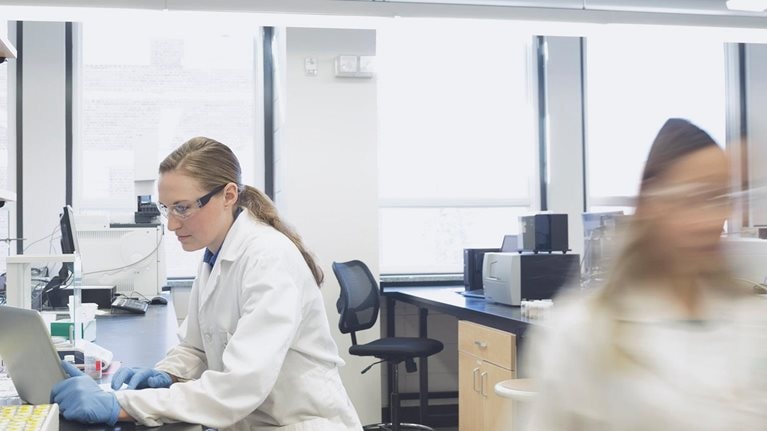Pharma technical development, also known as CMC (chemistry, manufacturing, and controls), is a complex multidisciplinary function critical to the successful development of any drug (see sidebar “Excellence in technical development”). Its purpose is to develop processes and methods for producing safe and effective medicines. Though often in the shadow of clinical development, CMC drives important advances, helping to accelerate drug development, pioneer cutting-edge pharmaceutical technologies, devise new forms of drug delivery that make conditions “druggable,” optimize development cost, increase patient adherence, and broaden access for undertreated populations.
In recent years, CMC leaders have started to embrace advanced analytics, data science, digitalization, automation, and other technical and industrial developments, yet the function still has some way to go on its modernization journey. Too often, legacy processes, unstructured data, a lack of standards, and siloed data and systems architectures prevent companies from realizing the full potential of novel digital tools, processes, and working methods. Through McKinsey’s CMC Forum and our work with leading biopharma companies, we have formed a perspective on how CMC could transform itself into a dynamic, responsive function that sits at the heart of effective drug development and delivery.
The need for change
For decades, CMC organizations have been well served by stable operating models in which groups of specialists managed laboratories and systems and worked with clearly defined small-molecule and biologics modality platforms. Recently, this approach has begun to falter under the strain of several industry trends:
- Faster pace of pharmaceutical development. The acceleration of pharmaceutical development is putting CMC more frequently on the critical path. As cycle times for drug development shrink in response to innovative trial designs, optimized clinical-operations processes, and expedited regulatory programs, CMC is under pressure to adapt its timelines and ways of working.
- Increasing complexity of product development. Therapeutics are becoming more complex to develop as pharma pipelines diversify into new modalities,1 manufacturing processes become more demanding, and product specifications are broadened to emphasize device and software components.
- Advancing technologies. New technologies are being introduced at a more rapid rate. Innovations in physical automation, digitalization, production systems, and testing methods require CMC to recruit and nurture new talent as well as acquire capabilities via external collaborations and strategic partnerships.
- Proliferation of data. The volumes and types of data generated by pharma R&D are exploding. With more data being generated from equipment, prediction models, and networks of external partners and vendors, data governance and knowledge management are becoming ever more critical to efficient and compliant product development.
- Growing importance of sustainability issues. The increasing focus on environmental sustainability and social responsibility is changing the way pharma leaders set aspirations for patient and workforce well-being and governance, as well as environmental impact.
For pharma companies facing these and other pressures and opportunities, the time has come to rethink the CMC operating model.
Five imperatives for the future
In light of the trends shaping the industry, we see five shifts that can increase the likelihood of a CMC transformation succeeding. These shifts involve a greater focus on patients, more sophisticated and extensive use of data in decision making, digitalization to improve efficiency, intensified collaboration across functions and across the industry overall, and more fully embedded consideration of sustainability.
1. Making technical development more patient centric
CMC leaders can improve their focus on patients and healthcare professionals. Areas where this effort is likely to have the greatest impact include researching patients’ and professionals’ needs and improving clinical supply chains.
Better understanding patients and healthcare professionals to maximize therapeutic benefits. Patients’ and clinicians’ experience of using a therapy—for example, the size and taste of a pill or the ease of using an asthma inhaler or insulin injector, or the safety of the needle—can affect adherence to treatment, the therapy’s effectiveness, patients’ quality of life, and healthcare staff experience. Therefore, CMC teams could improve technical development by involving patients in product design from an early stage, exploring their needs, and soliciting their input into target product profiles. The adoption of virtual and augmented reality, 3-D printing, and other new techniques could help teams design, develop, and test prototypes more quickly and efficiently. With patients’ consent, CMC teams could also use behavioral data from wearable sensors to modify the design of a drug or device so it is more effective, convenient, or easy to use.
Reimagining clinical supply to enhance patients’ and investigators’ experience. As decentralized trials and innovative individualized treatments proliferate, clinical supply has a bigger part to play in improving patients’ and investigators’ experience. In decentralized trials, some ways to improve patient compliance and retention include the careful design of last-mile delivery to the doorstep, kit packaging, and remote collection services for health data. Such improvements can also enable investigators to conduct trials more quickly and easily, as well as provide a better experience for trial participants. Individualized treatments such as cell therapies require much faster cycle times than conventional therapies and have a shorter shelf life, so reconfiguring clinical supply chains to maximize speed and responsiveness will be critical to improving the patient experience.
2. Adopting data-driven technical development
CMC data are a critical component of both pharma product development and regulatory submissions. As companies access a wider range of external data sources, digitalize their workflows, and generate real-time data from automated equipment, sensors, and processes, data flows will increase substantially. The CMC function will need to ensure data findability, accessibility, interoperability, and reusability; oversee the effective sharing of data between different departments through appropriate data governance models; work at a pace that meets the needs of counterparts in the manufacturing and R&D functions; and work out how to use this wealth of data for the benefit of patients and the business.
In the CMC lab of the future, data-driven technical development will look very different from the traditional activity-based model (see sidebar “Fit-for-purpose digital infrastructure with tailored data backbone”). Scientists will access data instantly through a cloud-based architecture that connects state-of-the-art laboratory information management systems, electronic laboratory notebooks, and other systems and is managed via a robust data-governance framework. Natural-language processing will support knowledge management across the organization by enabling the sharing of current project data between departments and the generation of insights from previous R&D projects. Real-time access to project data and interactive visualization tools will improve decision making at the project and portfolio levels.
Equipped with a continuous flow of consistent asset data from early research to clinical development and manufacturing, CMC will use advanced analytical methods to investigate how upstream molecule and process characteristics affect downstream manufacturing processes, patient outcomes, and pharmacovigilance. Ready access to structured data with appropriate metadata will expedite the creation of regulatory dossiers and minimize laborious manual review processes.
To achieve this vision, pharma companies will need to understand who generates what information and how and when it is used. They also must invest in data and data leadership, as well as specify who is responsible for managing data assets to enable value capture.
3. Unlocking the full scientific potential of CMC
As pipelines become more complex and the demands for process efficiency intensify, pressures are mounting on CMC’s resources and timelines. In the future, routine control, analysis, and documentation processes could be automated to reduce the burden of non-value-adding tasks and leave scientists more time for creativity, experimentation, and innovation. This faster-paced environment will call for new skills and profiles—in particular, multidisciplinary experts with digital expertise—and deploy a suite of digitally enabled tools and solutions such as the following:
- In silico tools. Process development and scale-up can be laborious and time-consuming. CMC labs are already using mathematical models to mimic process behavior and reduce the number of wet-lab experiments. In the future, self-training neural networks will combine new empirical knowledge with chemical and biological laws to produce and continually improve in silico tool kits. These tool kits will predict the outcomes of experiments and provide data-driven methods to expedite design decisions. Experiments will be filtered in advance, conditions will be predefined, and performance will be precisely controlled with minimal human intervention. “Digital twins” of unit operations will be routinely used to optimize process parameters such as glucose concentration, cell density, and acetate level in real time, as well as to select optimal HPLC2 columns and predict formulation parameters. Digital twins could be combined into a digital twin of the entire lab, enabling the simulation of complete CMC processes across the value chain.
- High-throughput processes and physical automation. High-throughput devices such as liquid-handling stations and automated bioreactor systems are already being introduced across the industry. In the CMC lab of the future, co-bots will step in where human interaction is needed and assist staff on the spot or by remote control, thereby reducing manual labor, making labs safer, and improving repeatability and output quality. Equipment in all labs will feed data into a central storage platform managed by a CMC control tower that orchestrates the software tools needed to plan and manage all processes and parameters.
- Data analytics. In the CMC lab of the future, the data generated by wet-lab experiments and in silico simulations will be cleaned, processed, and filtered automatically in real time before being synthesized and delivered using standard formats and interactive dashboards. The value of large volumes of data—such as data generated by liquid-handling systems where hundreds of experiments are performed simultaneously—will no longer depend on human abilities to identify patterns, spot errors, and draw conclusions. Subject-matter experts will use automated in silico tools to support and accelerate data-based decision making.
- Automated reporting and documentation. Once documentation management is fully digitalized, technical and regulatory documentation can be automated beyond today’s templates and prepopulated reports to reduce the administrative burden and ensure consistency and quality across projects and development stages. In the CMC lab of the future, templates and regulatory documentation will be tailored by region and health authority and updated automatically to prevent version-control issues, rework, and overdelivery. A central storage platform will improve data integrity and streamline communication and data exchange internally and at the interface with authorities.
To date, some leading CMC organizations have focused their digital transformations on developing high-value use cases, such as in silico tools to model scale-up parameters or accelerate stability assessments. Others have built digital platforms as a basis for future advanced use cases, such as digital twins of unit operations. Over time, if the full potential of digitized drug development is to be realized, these efforts will need to be scaled up into an organization-wide digital transformation.3
4. Collaborating across functions and across the industry
As one of the most multidisciplinary functions in pharma R&D, CMC sits at the center of a network spanning research, development, and manufacturing, integrating work with different—and sometimes competing—priorities, risk profiles, and operating models. To make information flows and decision-making processes faster and more transparent, CMC leaders will need to break down geographical and subfunctional silos within the CMC organization itself. Some pharma companies are already reorienting their modality-based organizations around capabilities so that skills and knowledge can readily be shared between teams developing synthetic and small-molecule products and those working on biologics.
In the future, feedback loops from early research to launch will supply data on pharmacovigilance, clinical outcomes, and manufacturing deviations and performance; companies can use that feedback to improve process development.4 Similarly, digital processes and digital twins will facilitate technology transfer while ensuring data integrity and completeness and two-way exchange of process and product knowledge.
Given the scale and pace of new technology development and the intense competition for specialized talent, CMC organizations will rely more than ever on robust networks of strategic collaborations that extend beyond academic institutions, contract development and manufacturing organizations, and peers to include specialist niche service providers and healthtech innovators. Through these relationships, CMC will gain access to sophisticated solutions such as lab-data-processing systems, intelligent lab and data automation, and cloud-based bioprocessing. As vendors mature, pharma companies will gain access to outsourcing solutions that integrate discovery, CMC, clinical development, and manufacturing. Maintaining data integrity will be essential to capturing the full potential of these collaborations.
To realize this vision, companies may find it helpful to collaborate in precompetitive initiatives to develop common standards and codify expectations for vendors. To advance the scientific discipline of CMC, they may also engage in forums for sharing data in a safe, federated learning environment like those fostered by Pistoia Alliance and MELLODDY.
5. Embedding sustainability into pharma development
The CMC function of the future will take particular care in designing the processes that define products’ environmental footprint throughout their life cycle. It will intensify efforts to recycle materials and waste, make chemical processes more efficient, reduce the consumption of organic solvents, avoid the use of toxic substances, manage greenhouse-gas emissions, improve water stewardship, and make supply chains more sustainable. As part of a joint effort with research, development, manufacturing, and commercial, CMC will also develop product-specific target sustainability profiles for compounds or manufacturing processes. These may form part of target product profiles or be specified separately on requirement sheets early in development, with regular reviews and updates thereafter. Some sustainability measures may trigger technological changes; for instance, a move toward flow chemistry and biocatalysis may require modification of CMC processes, equipment, and capabilities.5
It’s worth noting that sustainability can’t be tackled by CMC alone. Any successful effort will require the right organizational culture, clear goals, and top-management support.
Making a start
Faced with a rapidly changing environment, CMC leaders need to act quickly. They should begin by developing a clear and ambitious vision for CMC and ensuring it is championed at the top of the organization. Initiatives should be focused on well-defined use cases and prioritized in line with the value they deliver through patient benefits, accelerated development, enhanced productivity, improved capacity, better quality, or greater sustainability.
Capability building will be critical and will require new roles such as data scientist and data engineer as implementation progresses, whether those new capabilities are built in-house or acquired through strategic partnerships. Leaders should manage data as a strategic asset, build a flexible IT backbone, and work with an array of technology suppliers to scale use cases rapidly.
As in any transformation, effective change management will be critical, including the setup of strong governance structures and investment in culture change and business buy-in. To ensure that new solutions are scalable and sustainable, some CMC organizations establish a center of excellence to develop resourcing and capability strategies, oversee the new operating model, orchestrate data management and adjustments to IT infrastructure, and offer support from experts in change management.
Today’s dynamic industry environment calls for a new paradigm for CMC development. Leaders who seize this rare opportunity can position CMC as an engine for innovation and speed to shape a brighter future for this vital function.


